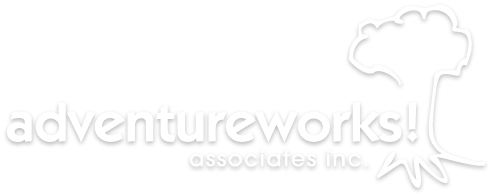Operating Climbing Programs During COVID
/Climbing activities are possible during this time of COVID-19. Some modifications to operations are required but all-in-all it’s a very doable activity that participants enjoy and staff find not too challenging to run while complying with public health recommendations.
Set-up
Modifications begin with set-up. Staff will need gloves to handle participant and group gear. Latex or nitrile gloves are fine but dishwashing gloves are bit more durable. And leather gloves are ideal for flaking rope. Lay out your spots at the climb site -- people will clump together during unstructured waiting time so structure this part of the program as much as possible. It’s helpful if it is easy for climbers to identify where to stand if they want to climb a particular element or route.
Set up the harness circle paying attention to maintain 2 m of physical distancing. Make sure equipment is laid out as well as possible since it is impossible to physically assist a participant and stay physically distant. Have hand sanitizer ready so people can sanitise before touching the gear.
Harnessing
Harnessing is a “masks on” activity for participants and staff. Each participant needs their own set of equipment. While it’s true that people won’t be moving around, staff may need to enter into a participant’s 2 m space – although it’s far better if someone from within their cohort or social circle can provide this level of assistance. A demonstration is key because participants need to harness themselves. The demonstrator should be physically distant and take their mask off so they are easy to hear and understand. Keeping the same harness demonstrator allows one staff member to use a set of gear they have touched over and over again rather than “wasting” participant harnesses for demonstration. We store my demonstration set in a laundry basket. After harnessing is complete, do a thorough visual double check and have people sanitize their hands once again.
Climbing
Once the group is at the climbing wall or ropes you are going to do a demonstration climb. This climb illustrates the belay system but more importantly it demonstrates the additional COVID-19 procedures. For a traditional belay, the staff member starts by putting on a pair of leather gloves (Latex/Nitrile or rubber gloves won’t work – they will either stick to the belay rope or be pulled off) and attaching the belay device to their harness while the climber starts by sanitising their hands. If the belayer doesn’t have gloves, simply sanitise between climbs. The climber then connects the carabiner on the belay rope to their harness and does a squeeze-check. Do a visual pre-climb check (Belay on? May I climb?) as usual. Climb as usual but keep the mask on – heavy breathing all over a collection of climbing holds is less than ideal. Once the climber returns to the ground, the climber unclips the carabiner and sanitizes their hands. The staff belayer grabs a disinfectant wipe and wipes down the carabiner for the next climber. Who sanitises their hands before connecting the carabiner to their harness. If there is a participant belay team, they drop the rope and re-sanitise their hands. Repeat and repeat and repeat. This repetition means that each climbing route (or each belayer) needs their own sanitizer and wipes. Sharing is not convenient. Having a container for used wipes is important. We’ve found that an empty wipes container works well. Label it “used” so there is no confusion about which type of wipe is in which container.
Paired elements or climbing routes next to each other don’t maintain enough distance. Alternating routes allows for physical distancing while maximising efficiency. A climber can be getting connected as another climber is being lowered on the adjacent route.
Take down and cleaning
At the climb site a staff member wearing gloves should take-down the belay ropes and belay devices. Belay devices and carabiners get wiped down again. The ropes get sent to washing.
At de-harnessing, participants should take off their own harness according to instructions – no one wants missing harness parts and pieces because well meaning folks have done too much. Participants can then carry their own gear to the area where it will be washed according to its manufacturer’s instructions and “quarantined” – it is impossible to disinfect textiles in a way that preserves the safety and functionally of climbing equipment so it needs to sit unused for 48 hours or 3 nights. Check out the Adventureworks COVID-19 guidance document for more details. If you are switching climbing groups throughout the day, each group will need their own set of equipment. Yes, we are very happy we own a lot of gear at Adventureworks – rather than some harnesses being used a lot, all the harnesses are being used equal amounts these days.
Climbing while following public health recommendations is very doable. Please give us a call if you have questions – we’d be happy to help you get your climbing wall or high ropes course running.
Written by Kathy Haras, Ph.D


